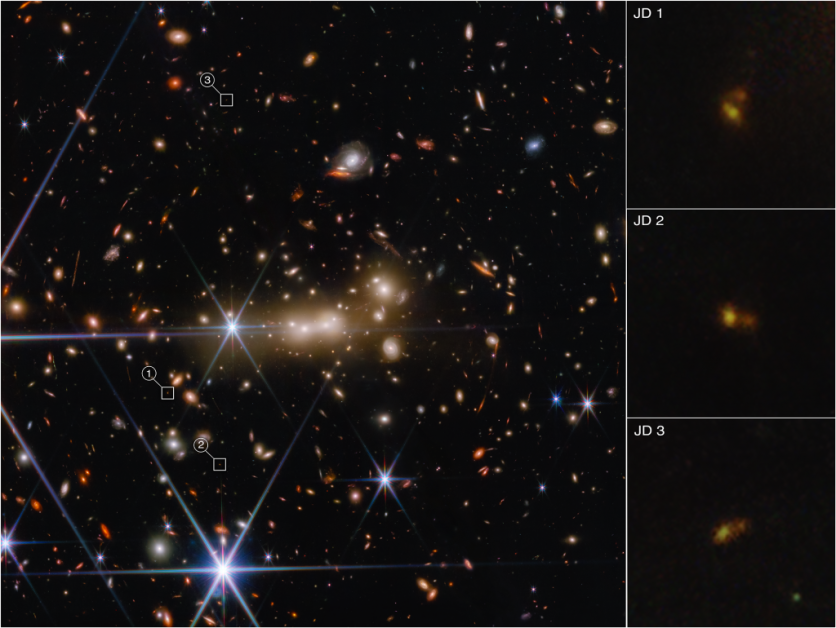NASA's James Webb Space Telescope has only begun its operations a few months ago, but it is already ushering in an era of exciting discoveries in astronomy after peering through a galaxy cluster in the early universe, as reported first by Interesting Engineering.

Early Universe
The newly-minted telescope was created specifically to pick up infrared light from extremely far-off galaxies and provide astronomers with a view of the early universe.
It is not generally known what galaxies were like at this formative stage of our cosmos. However, dim background galaxies can be made more visible and appear several times in various regions of the image thanks to gravitational lensing caused by a group of galaxies in the foreground.
Three images-JD1, JD2, and JD3-that are magnified by factors of eight, five, and two, have been created by the gravitational lensing of the huge galaxy cluster MACS0647.
Blue was allocated to wavelengths of 1.15 and 1.5 microns (F115W, F150W), green to wavelengths of 2.0 and 2.77 microns (F200W, F277W), and red to wavelengths of 3.65 and 4.44 microns (F365W, F444W) in the image taken by Webb's Near Infrared Camera (NIRCam) sensor.
However, it is worth noting that the study is still in its early phases of discussion and is yet to receive a peer review.
Despite being found ten years ago by the Hubble Space Telescope, the galaxy MACS0647-JD was only seen as a tiny red dot in Webb's image.
"Now we look with Webb, and we're able to resolve TWO objects! We're actively discussing whether these are two galaxies or two clumps of stars within a galaxy. We don't know, but these are the questions that Webb is designed to help us answer," Dan Coe of AURA/STScI for the European Space Agency and the Johns Hopkins University said in a press release statement.
Read also: NASA James Webb Snaps Two Galaxies Clashing, Creating Stars in the Process
Window to the Early Cosmos
NASA said the galaxy offers a window to a moment when the universe was only 3% of its current age of 13.7 billion years. It had been discovered 420 million years following the Big Bang at the time.
One of the researchers using Webb to observe the far-off galaxy MACS0647-JD, Tiger Hsiao of the Johns Hopkins University, stated that they might have seen a galaxy merger in the very early cosmos.
Larson also expressed her delight at the wealth of knowledge that they are receiving from the Webb telescope.
"And this is not a deep field. This is not a long exposure. We have
n't even really tried to use this telescope to look at one spot for a long time. This is just the beginning!"
Related Article : NASA's James Webb Space Telescope Finds Galaxies Merging Around a 'Monster' Black Hole
This article is owned by Tech Times
Written by Joaquin Victor Tacla
ⓒ 2025 TECHTIMES.com All rights reserved. Do not reproduce without permission.




